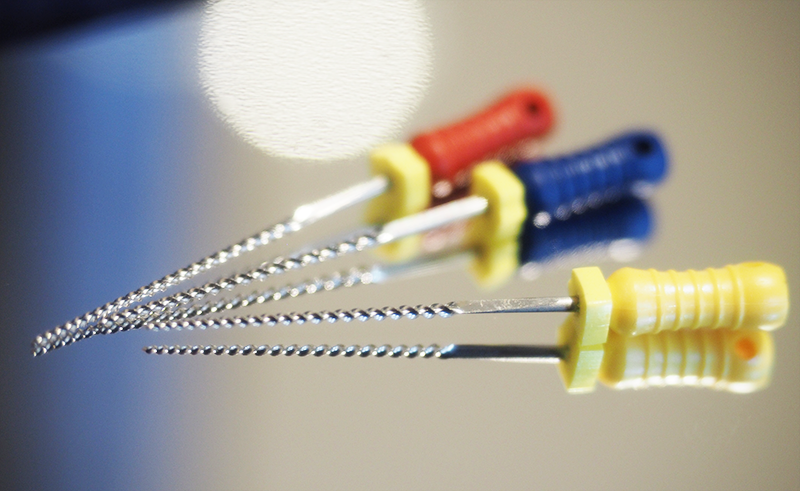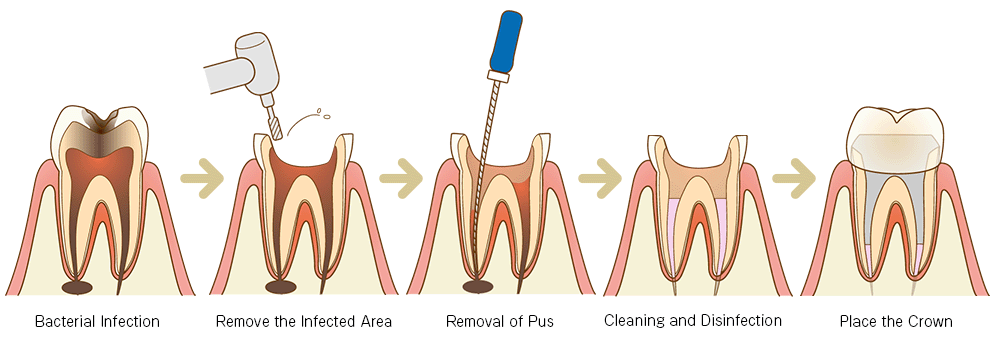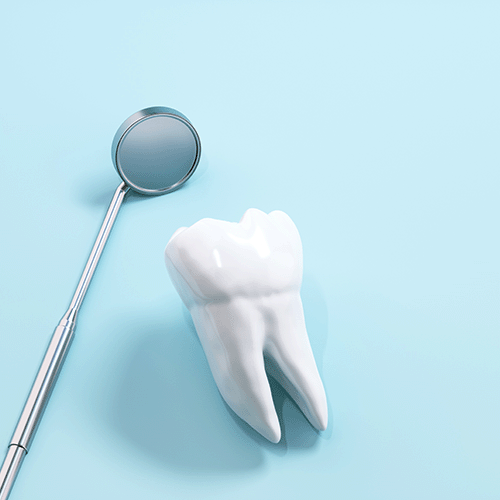About Root Canal Treatment (Nerve and Root Therapy)
Root canal treatment is an important procedure for preserving a tooth over the long term.
The root canal is the narrow chamber inside a tooth that contains the dental pulp—made up of nerves, blood vessels, and connective tissue.
Root canal treatment becomes necessary when this pulp becomes inflamed or infected.
Common causes include deep cavities, tooth fractures, or trauma.
If left untreated, the infection can spread beyond the root to surrounding tissues, causing gum swelling, abscess formation, and in severe cases, the loss of the tooth.
In some instances, it can even lead to swollen lymph nodes or fever, affecting your overall health.
Depending on the extent of the damage, root canal therapy can often preserve your natural tooth and maintain its function for the long term.

What Is Root Canal Treatment?
Root canal treatment is a procedure to remove inflamed or infected pulp tissue, bacteria, and any old filling materials from inside the root canal.
Using a special thin instrument called a file, the dentist carefully cleans and shapes the inside of the canal, removing the damaged pulp and disinfecting the area to reduce pain and inflammation.
Once thoroughly cleaned, the canal is filled with a sealing material. A post may then be placed, followed by a crown or other restoration to restore the tooth’s function and appearance.

About the Treatment Duration
Root canals vary in number and shape from person to person, and their structure can be extremely complex and delicate.
This makes precision essential, and special care must be taken throughout the treatment to prevent saliva and bacteria from entering the canals.
For some patients, treatment can be completed in just a few visits. However, depending on the tooth’s anatomy and the severity of the condition, it may take several months to complete.
Root Canal Treatment Process (Pulp Removal)

Diagnosis
We use X-rays and dental CT scans to assess the shape of the root canals and identify any problems.
Based on the diagnostic results, we create a customized treatment plan.
Removal of Infected Pulp Using a File
Using a specialized instrument called a root canal file, we carefully remove the infected pulp (nerve tissue), bacteria, and any old filling materials from inside the root canal.
Disinfection with Medication and Temporary Sealing
The root canal is cleaned and disinfected with medication, then filled with a suitable medicated material based on your symptoms.
To prevent new bacteria from entering, the canal is temporarily sealed.
Steps 2 and 3 are repeated over 2 to 3 visits (depending on the case) to reduce bacteria in the root canal as much as possible.
Root Canal Filling
Once the root canal has been thoroughly disinfected and symptoms such as pain and inflammation have subsided, we perform a procedure called root canal filling.
Post and Crown
Once the root canal has been properly sealed, we place a core (post) to reinforce the tooth structure, and proceed with the fabrication of a crown.
To prevent bacteria from re-entering through the margin between the crown and the gum, we carefully craft a high-precision crown and bond it securely in place.
For Patients Undergoing Treatment
Please avoid hard foods during treatment
During root canal treatment, chewing hard foods may cause the temporary filling to come loose, the tooth to chip, or pain to occur.
Please follow your dentist’s instructions carefully throughout the treatment process.

Please do not discontinue treatment midway
Root canal treatment requires multiple visits to complete.
If treatment is stopped midway, the condition may worsen, and in some cases, the tooth may need to be extracted.
To preserve your natural tooth for as long as possible, it is important to complete the entire course of treatment.

In some cases, tooth extraction may need to be considered
If a crack is found in the tooth root during root canal treatment, tooth extraction may need to be considered as part of the treatment plan.

Catch It Early, Treat It Early
Once the dental pulp (nerve) becomes inflamed or infected, it cannot heal on its own.
If tooth decay reaches the nerve or a bacterial infection occurs, the pulp must be removed through root canal treatment.
If left untreated, the condition can worsen, resulting in a longer treatment period and higher costs.
That’s why it’s important to maintain good daily oral hygiene, prevent cavities and gum disease, and visit the dentist regularly for early detection and timely treatment.
Click Here to Book an Appointment
If you have any concerns about your health or oral condition,
please feel free to consult Sakura Clinic, a Japanese medical and dental clinic in Dubai.
